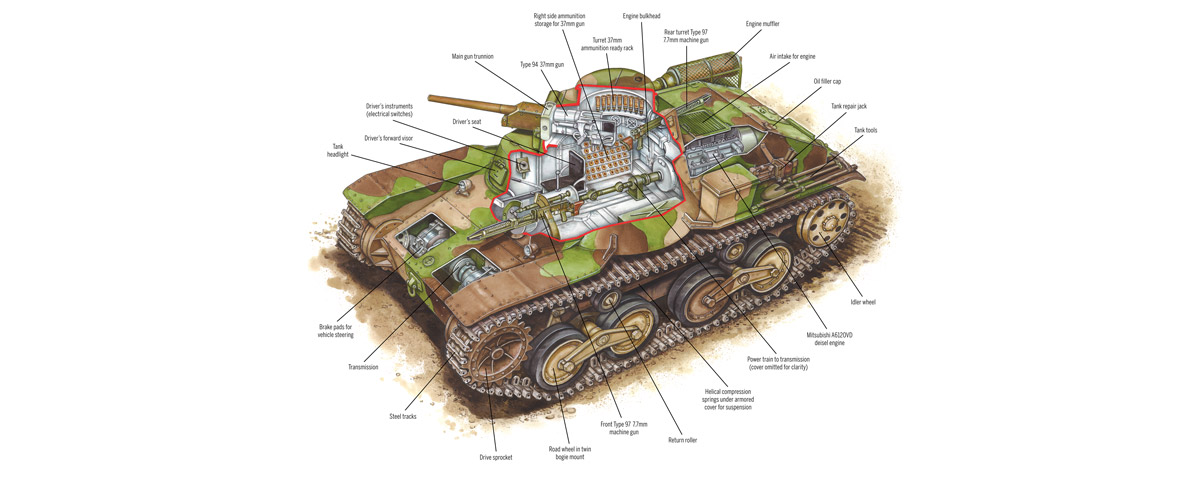Crew: Three
Combat weight: 8.1 tons
Armor: 12mm hull and turret, front, rear and sides; 9mm top and bottom
Power-to-weight ratio: 16.2 hp/ton
Overall length: 14 feet 4 inches
Width: 6 feet 9 inches
Height: 7 feet
Engine: Mitsubishi A6120VD 120 hp six-cylinder diesel engine with a five-speed transmission
Fuel capacity: 27 gallons (main tank), seven gallons (reserve)
Max. speed: 28 mph (road), 18 mph (cross-country)
Max. range: 130 miles
Fuel consumption: 5.4 mpg
Ground clearance: 15 inches
Armament: Type 94 or Type 98 37mm tank gun; two Type 97 7.7mm machine guns
Ammunition: 130 rounds 37mm; 3,300 rounds 7.7mm
Muzzle velocity: 2,300 fps
Max. effective range: 1.8 miles
In July 1933 Japan’s infantry and cavalry schools—responding to complaints that the Type 89 medium tank was too slow and the Type 92 cavalry tank too lightly armed (machine guns only)—collaborated on the design of a tank that would combine greater speed with better armament. The result was a 7.7-ton light tank (half the weight of the Type 89B, but using the same diesel engine) armed with a 37mm cannon. Mitsubishi had a prototype ready for trials by June 1934. After further modifications, including the addition of a rear-facing machine gun in the one-man turret, the machine went into production in 1936 as the Type 95 Ha-Go (“third issue”) light tank.
The Ha-Go entered service in Manchuria, and at the outset of World War II it supported the invasions of Malaya, Singapore and the Philippines, where it held its own against the Allies’ M3 Stuart light tanks. Although its quarters were cramped and its armor scarcely able to withstand a heavy machine-gun round, attempts to produce an improved design—including an amphibious variant—amounted to little. Mitsubishi and the Hino Motor Co. built 2,300 Ha-Gos, which Japan deployed everywhere from western Burma to Kiska in the Aleutian Islands. But as the Allies forced Japan onto the defensive, the Ha-Go succumbed to more advanced opposition, such as the M4 Sherman medium tank. When Soviet forces stormed Manchuria in August 1945, the Ha-Go and its medium-weight stablemates found themselves outnumbered and hopelessly outclassed by the armored columns that had just prevailed over Nazi Germany’s best.





